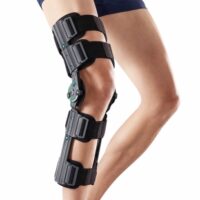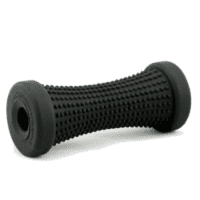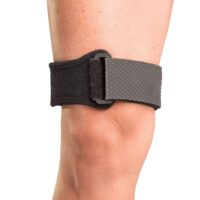Knee Arthroscopy
Article by John Miller

What is a Knee Arthroscopy?
Arthroscopy is a minimally invasive operation to repair a damaged joint. The surgeon examines the joint with an arthroscope (joint camera) while making repairs through a small incision.
You may have a knee arthroscopy to investigate or repair knee joint problems such as meniscus tears, some ligament repairs and joint injuries (e.g. mild arthritis). Compared with open surgery, arthroscopy has a faster recovery time.
What to Expect Post-Arthroscopy
Initially, you will experience some swelling and pain in the knee for a few days post-operatively. You will most likely be given a prescription for pain medication and an anti-inflammatory drug to help alleviate these symptoms.
If you need pain relief, you may be able to take over-the-counter painkillers such as paracetamol or ibuprofen. Always read the patient information that comes with your medicine and if you have any questions, ask your pharmacist or doctor for advice.
Ice packs applied for 20 minutes every 2 to 4 hours will assist your pain and swelling. You should apply a cold compress such as ice or a bag of frozen peas wrapped in a towel to help reduce swelling and bruising. Don’t apply ice directly to your skin, as it can damage your skin.
If possible, keep your foot and knee elevated above your heart to allow gravity to assist your swelling reduction.
Depending on your specific surgery, most post-arthroscopic patients are permitted to weight-bear. It is important to avoid aggravating your knee by too much weight-bearing or walking during the initial healing phase.
Your physiotherapist or surgeon will guide you. Follow your surgeon’s or physiotherapist’s advice about driving. It would be best if you didn’t drive until you’re confident that you could perform an emergency stop without discomfort. This is usually about one to three weeks after your operation.
Your recovery time will depend on what, if any, treatment your surgeon performs on your knee joint. You should be able to resume your usual activities after six to eight weeks, depending on the severity of your knee problems and your level of fitness.
What are the Risks?
Knee arthroscopy is commonly performed and generally safe. However, you need to be aware of the possible side effects and the risk of complications of this procedure.
Fortunately, most people aren’t affected. The possible complications of any operation include an unexpected reaction to the anaesthetic, a wound infection, excessive bleeding or developing a blood clot, usually in a vein in the leg (DVT).
Arthroscopy complications can include:
- accidental damage to the inside of your joint
- infection
- loss of feeling in the skin over your knee
- bleeding into your joint
- the surgery may not be successful, or it may have to be repeated.
Why is Post-Arthroscopy Physiotherapy Important?
After undergoing knee arthroscopy, it is important to begin exercising your knee immediately to restore strength and a full range of motion.
Initial exercises should be non-weight bearing in nature and should focus on gentle strengthening of the muscles surrounding the knee and increasing joint range of motion.
You should expect to feel a gentle stretch while performing your beginning exercises, but you should not experience any pain. Any activity that causes significant discomfort should be stopped immediately. It is also a good idea to ice and elevates your leg after performing these exercises to decrease any increase in swelling.
Your physiotherapist aims to safely return you to the best function possible for your knee in the shortest time. They will guide you through their professional expertise to maximise your surgical outcome. If you have any questions, please ask your physiotherapist.
What are the Goals of Physiotherapy Treatment?
The general aims of your post-operative physiotherapy include the following:
- Control pain, swelling, and hemarthrosis (bleeding into your knee joint).
- Regain normal knee joint range of motion.
- Progress your function from non-weight bear to full-weight bear.
- Activate your Vastus Medialis muscle (inner quads) & correct any patella (kneecap) malalignment to avoid future patellofemoral joint syndrome or arthritis.
- Regain a normal walking pattern (gait).
- Regain normal lower extremity strength. Regain full lower limb muscle length.
- Regain normal proprioception, balance, and coordination for daily activities.
- Restore any work or sport-specific function, e.g. squatting, kneeling, running or jumping/landing.
- Achieve the maximum level of function based on the orthopaedic and your goals.
If you have any questions, please ask your knee surgeon or physiotherapist.





















































































